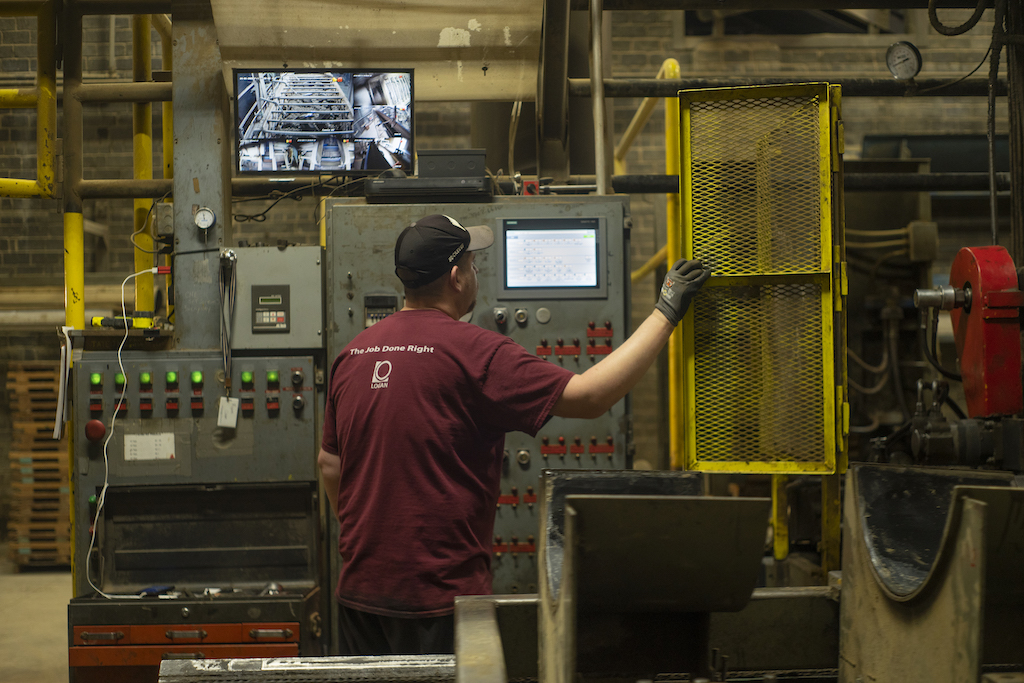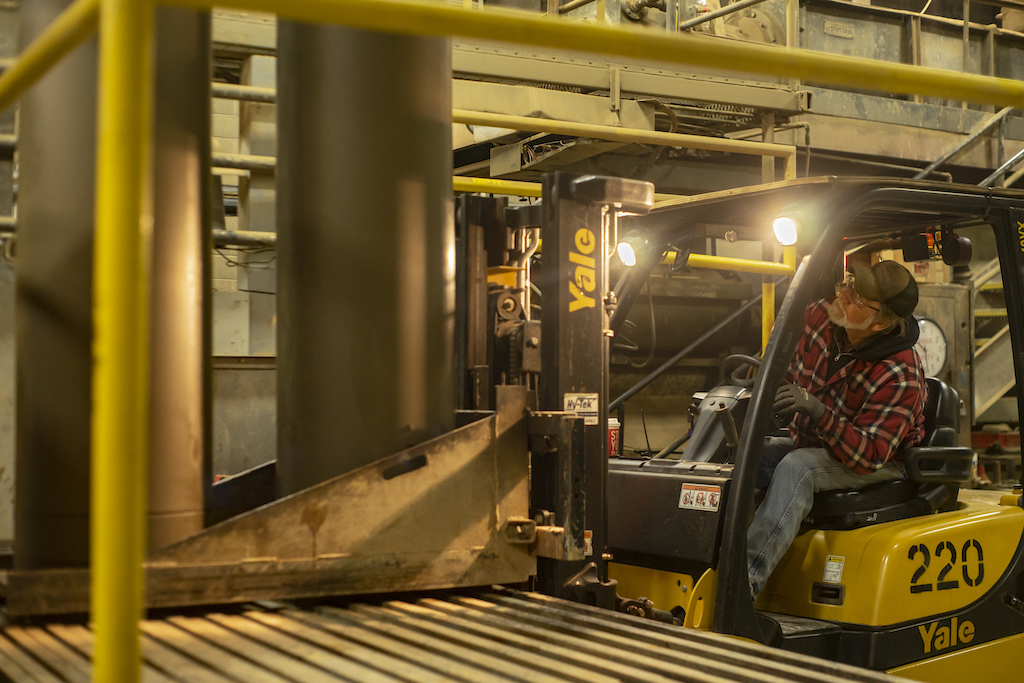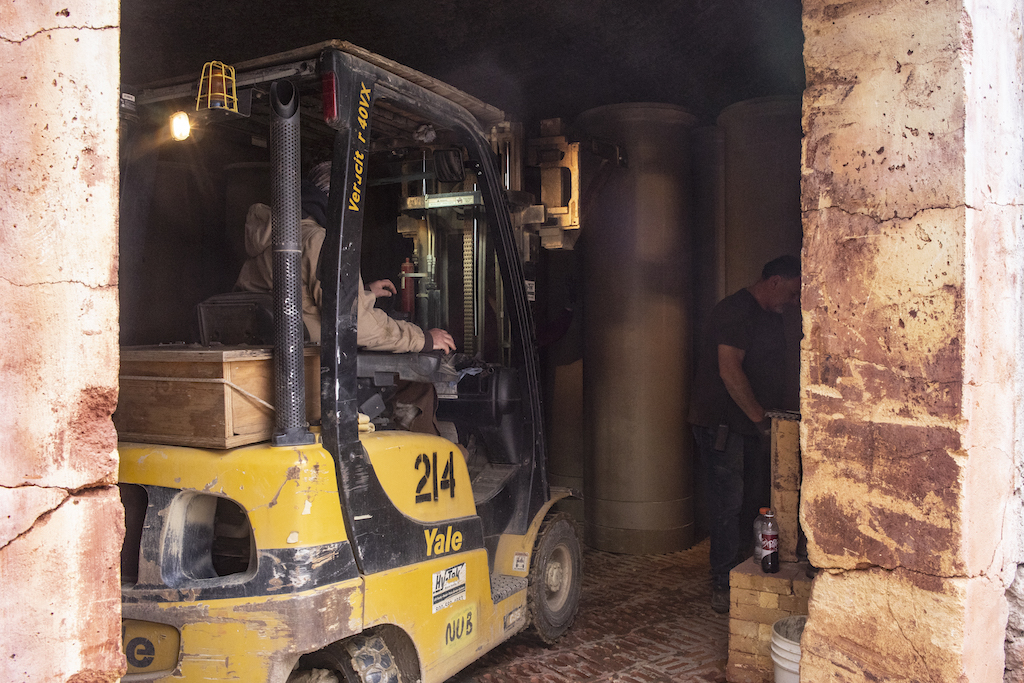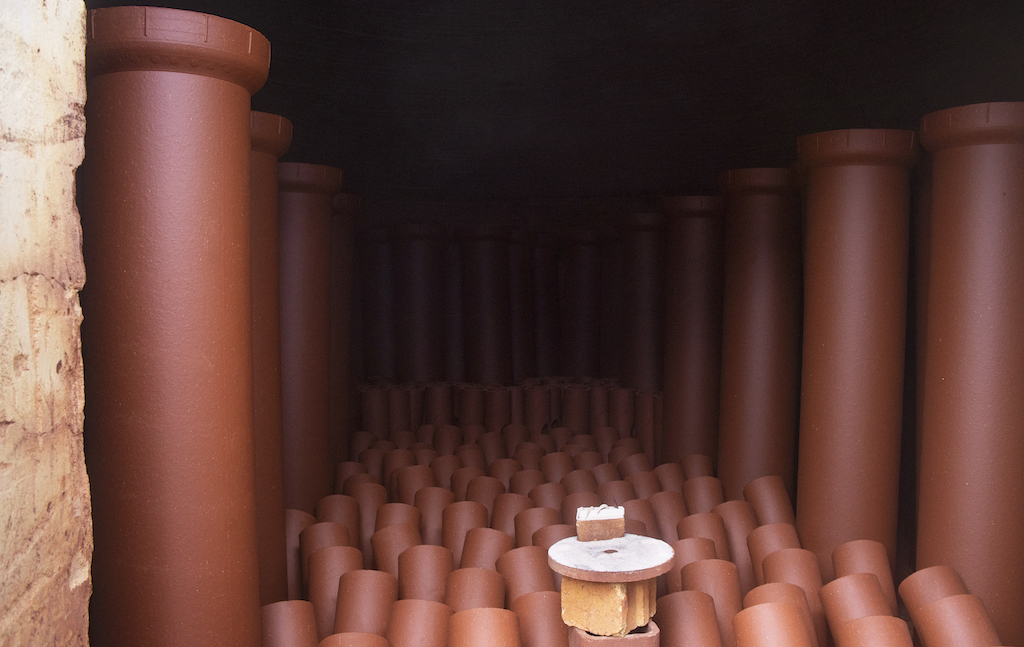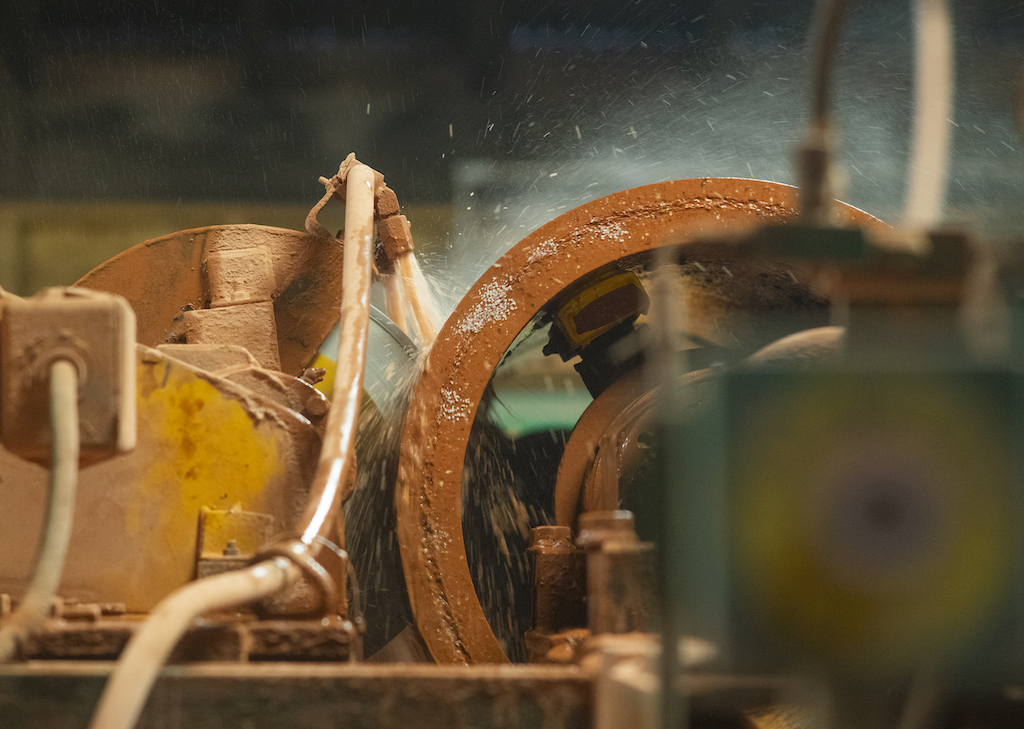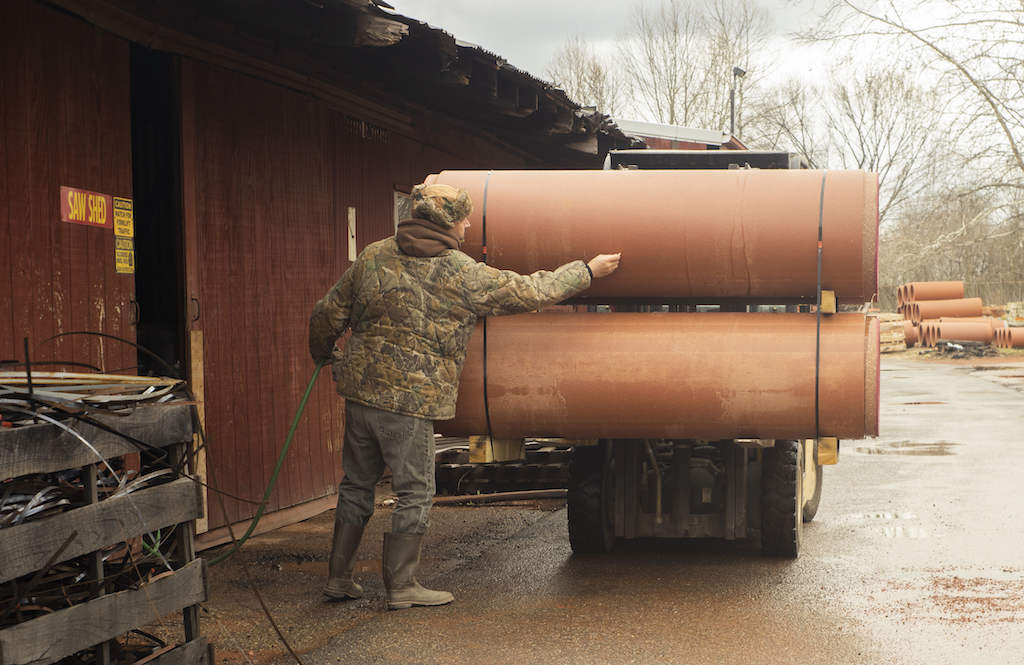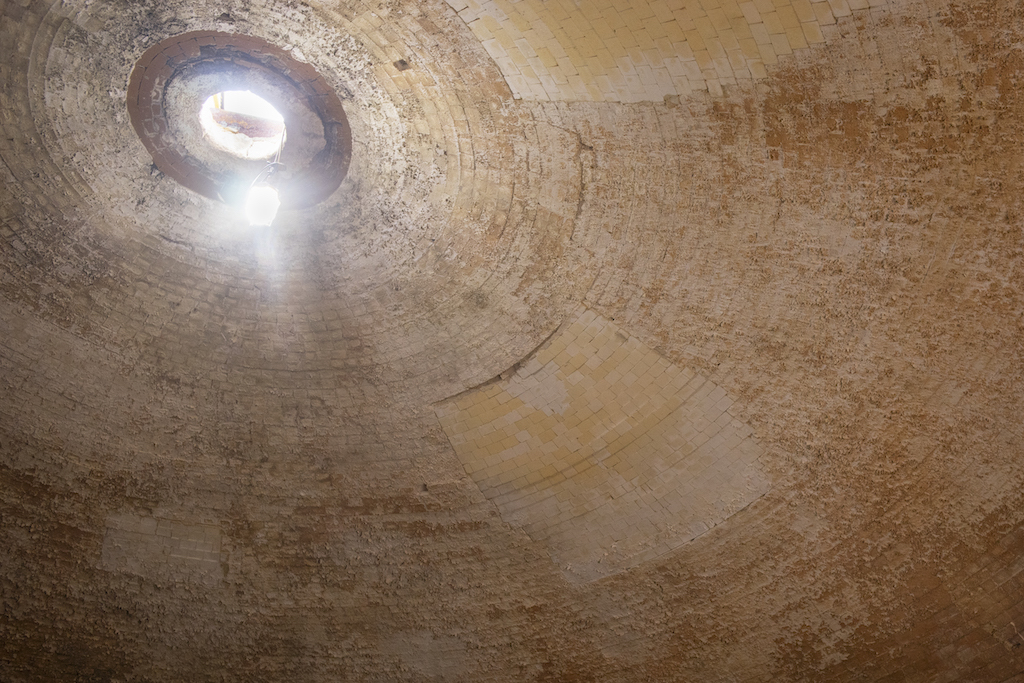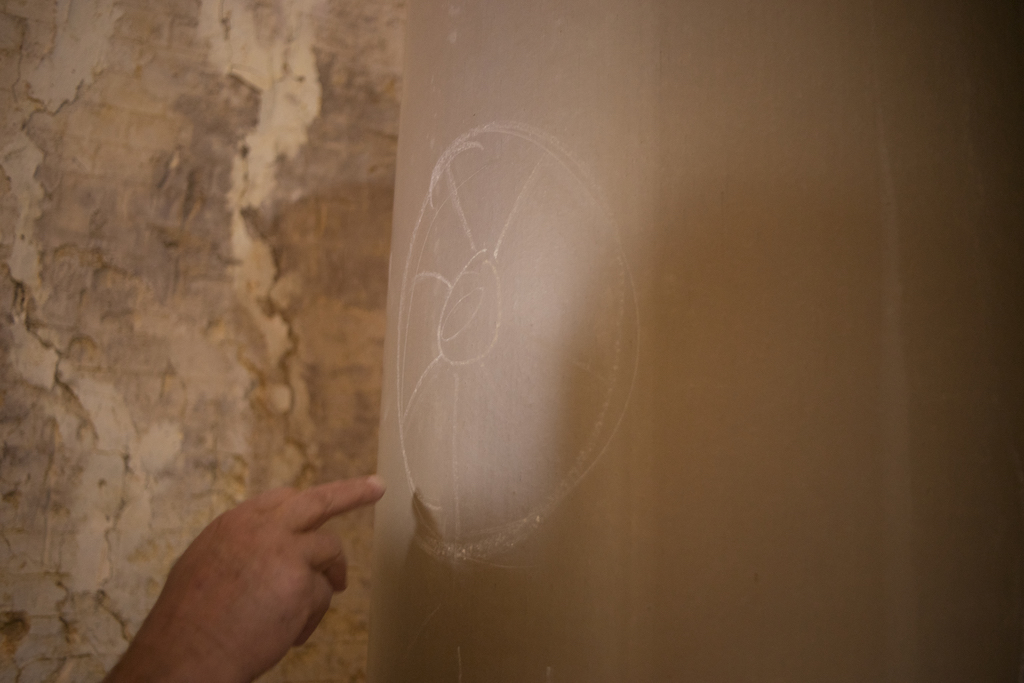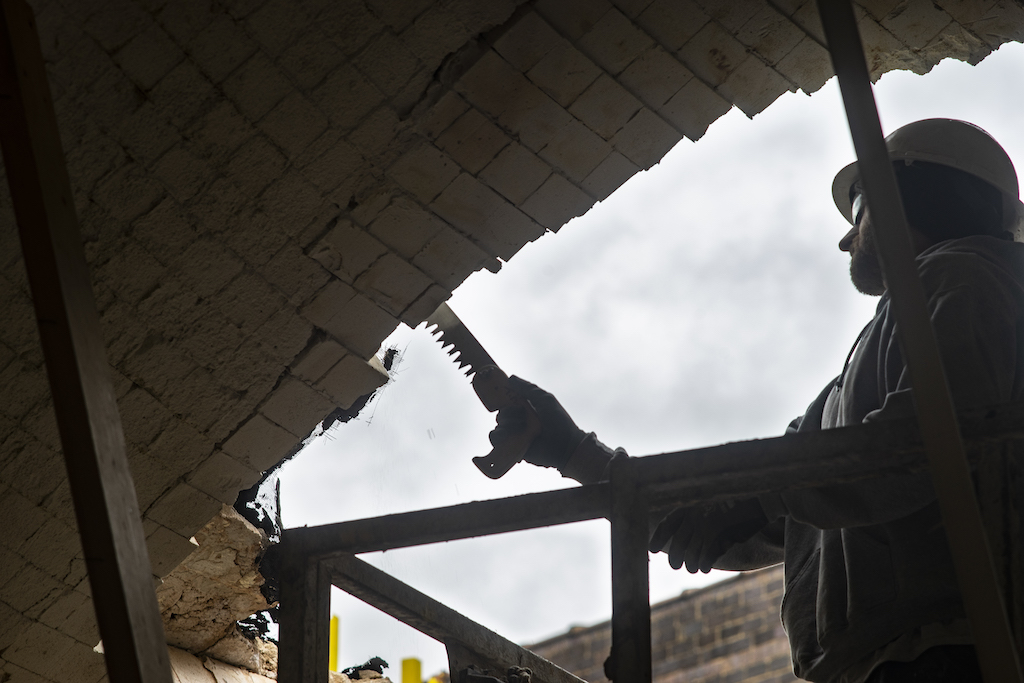
Photo By Isabella Huelsman
Bill Heft, vice president of operations, has worked with Logan Clay Products for 40 years, and takes great pride in the company.
Logan Clay Products LLC
Logan Clay Products has been in operation for over 135 years. They found their start in bricks, which paved and built the towns in the area in the 1800s. Once the demand for bricks passed, the factory modernized to produce other clay products, mainly pipes. Though the product has changed, the resource remains the same, and there is still an abundance of clay in the area.
Today, the company produces thousands of tons of products every year. It is one of few clay pipe manufacturers left in the area. Bill Heft, Logan local, and vice president of operations, says the quality of the product is what’s made them so successful.
”Mom and dad lived here in town. My grandpa worked for the railroad, grandma was a housewife. … Prior to that their parents lived here. We've always lived here. My brother works here, and his two sons. … It’s a family oriented business.”
The company employs around 65 people, with some shifts working around the clock to supervise the firing of beehive kilns. When the pipe is being made, clay is extruded, or pushed through presses to shape the pipe by press operators. After the pipes are extruded, they are moved by forklift and set in drying rooms. Then the set crew arranges the dried pipe in the kilns, and the firemen oversee the firing. The draw crew then takes the fired product from the kilns for finishing touches. Other staff will cut the fired pipes, and finish the ends so they can be joined together. Four to five kilns with around 100 tons of product each, are fired and finished every week.
“It's a rewarding job to be in. It can be very humbling at times, because you know, clay has its own mind, and when you're producing something from beginning to end, there's 500 things that go wrong with that piece before it's finished.”
Although clay and slate are nonrenewable and finite resources, the company mainly mines in one area just North of Logan, near Webb Summit. They operate in accordance with the Environmental Protection Agency, EPA, and the Mine Safety and Health Administration, or MSHA, and work to be as energy efficient as possible. Sourcing clay locally allows the company to cut down on transport expenditures, and be self-sufficient.
They stockpile around 25,000 tons of this material and bring in around 800 tons for production every two weeks.
Graphic Illustration by Owen Zeiler | Information sourced from Historical Marker Database, atlasobscura.com
Firing clay at a high temperature turns it into ceramic, through a process called vitrification. It is heated between 1,000 and 2,500 degrees Fahrenheit in a kiln. Different compositions require different temperatures, and with the clay mined in Web Summit, it’s essential to get the right mix of 70% shale and 30% clay, and a low sand content. Ten years ago the products at Logan Clay Products were fired at 2080 degrees, and by altering the composition, they are now fired 100 degrees cooler. This helps lessen the amount of natural gas used in the kilns, as well as lessen the strain on the kilns from repeated exposure to high temperatures.
All of the scraps from trimming or flawed pieces are ground up and either recycled black into the clay to make new products, or are ground or chipped into athletic sand or landscaping gravel.
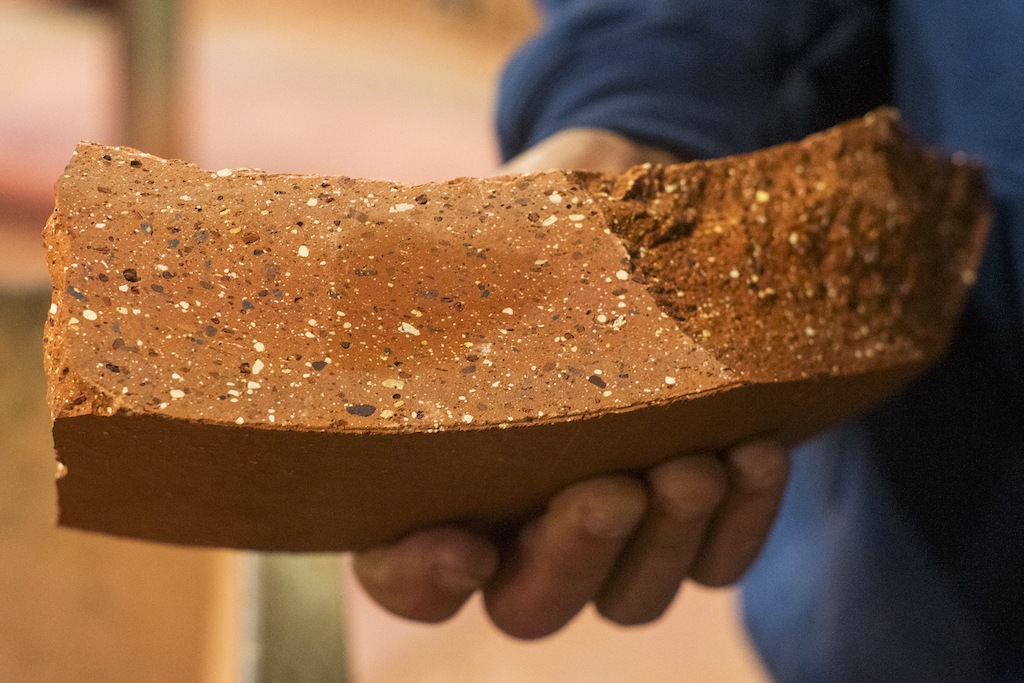
Photo By Isabella Huelsman
Bill Heft holds a scrap of clay pipe to show the interior makeup.
Clay pipes have been produced for hundreds of years, but with the development of less expensive plastic PVC pipe, the demand for clay pipe has become more niche. Clay pipe, however, has its benefits and is extremely durable, and can withstand acidic environments. Heft says Logan Clay distributes pipes to airports for this reason. The “no-dig” pipe Logan Clay Products produces also offers unique advantages, as it can be pushed through the ground without disrupting the surface, which is popular under highways or developments.
It requires strong ceramic to withstand these pressures, and the product must pass American Society for Testing and Materials, or ASTM, standards. ASTM tests if water percolates through the pipe, if it can withstand pressure, and the uniformity between the pipes. This makes for a long lasting product, and with proper installation and care they can last over 100 years.

